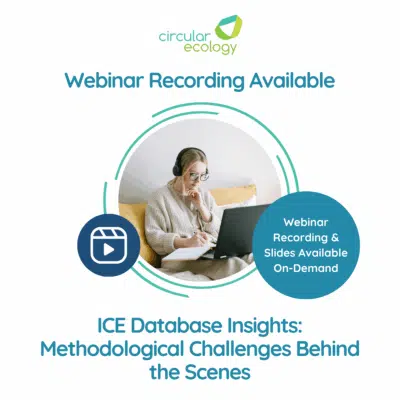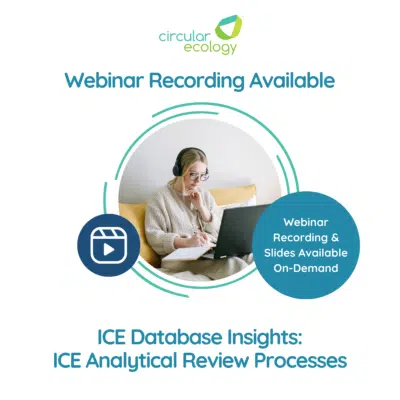If your organisation is looking to play its part in tackling the worsening effects of climate change, then an Organisational Carbon Footprint should be considered as an essential starting point in the development of your carbon strategy. By calculating its carbon footprint, any organisation can quantify the Greenhouse Gas (GHG) emissions arising from its core activities over a defined period, and which is usually reported in tonnes of carbon dioxide equivalent (tCO2e). An Organisational Carbon Footprint enables an entity to understand its carbon hotspots, and furthermore it can be used to benchmark and monitor any improvements achieved from future carbon reduction actions. By having an initial carbon footprint as a baseline, an organisation can start to build its Carbon Strategy through the setting of carbon targets and the development of a Carbon Reduction Plan, in order to ensure it can sustainably lower its emissions over a period of time.
Organisational Carbon Footprint

What are the benefits?
By making a commitment to measure its carbon footprint, there are a number of benefits open to an organisation. These include:
- Increased understanding of the issues most relevant to the organisation by quantifying environmental impacts and identifying carbon hotspots
- Improvements to brand perception and stakeholder relationships by adding more credibility to the organisation’s sustainability credentials
- More environmental accountability, and better placed to respond to any calls from Investors for the development of more robust sustainability strategies and commitments to reduce carbon impacts
- Can provide longer term economic benefits via increased incentive to invest in more efficient, low carbon processes, practices and technologies
- Compliance with Legislative & Regulatory Requirements – e.g., UK’s Streamlined Energy and Carbon Reporting (SECR), and the futureproofing of your organisation against any future carbon reporting requirements.
How to start your Organisational Carbon Footprint
There are several ways an organisation can develop its carbon footprint. However, using the universally recognised guidance set out by GHG Protocol Corporate Accounting and Reporting Standard, the following steps should be taken when developing an organisational carbon footprint:
- Setting your Organisational / Operational Scope & Boundaries
- Creating an Inventory Management Plan
- Defining an Activity Data Collection Plan
- Finding the most relevant Emission Factors
- Calculating and reporting your emissions footprint
What should you include?
An Organisational Carbon Footprint should consider the seven GHGs listed under the Kyoto Protocol. Most organizations will likely need to report its carbon dioxide (CO2), methane (CH4) and nitrous oxide (N2O) emissions, although depending on the organisation’s activities, HFCs, PFCs, SF6 & NF3 emissions may also need to be included where relevant to operations.

*Above figure taken from GHG Protocol (www.ghgprotocol.org)
Organisational carbon footprints contain 3 “scope” categories:
Scope 1 – direct emissions:
Direct GHG emissions occurring from sources that are typically owned or controlled by the organisation, for example, this would include emissions from combustion within owned or controlled facilities, equipment, and vehicles, etc. This also includes emissions resulting from processes (chemical or otherwise) in owned or controlled process equipment.
Typical examples of an organisation’s Scope 1 emission sources:
- Combustion of Natural Gas, Gas Oil, Fuel Oils, Heating Oils etc.
- Petrol / Diesel use in owned or controlled vehicles,
- Fugitive Emissions (e.g., refrigerant leaks)
- Process Emissions
Scope 2 – indirect emissions:
GHG emissions from the generation of purchased electricity (and heat, steam, and cooling) consumed by the organisation. Scope 2 emissions physically occur at the facility where electricity is generated, but are reported by the organisation consuming the commodity at point of use, based on purchased quantities.
The latest release of the GHG Protocol Scope 2 guidance sets out instructions for Dual Reporting of these emissions under both “Location Based” and “Market Based” methodologies:
- Location-based accounting method: A location-based method reflects the average emissions intensity of grids on which energy consumption occurs (using mostly country/region specific grid-average emission factor data. Examples include the emission factors published by IEA, DEFRA.
- Market-based accounting method: A market-based method reflects emissions from electricity that companies have purposefully chosen, or have been allocated by its supplier. It uses emission factors from contractual arrangements (supplier specific), which consider the type of contract between two parties. This can include energy bundled with attributes about the energy generation, or for un-bundled attribute claims. An example could be the emissions from an electricity supply contract with 100% renewable electricity, backed by EACs.
Scope 3 – “other” indirect emissions:
Scope 3 emissions result from the activities of the organisation but occur from sources not owned or controlled by the organisation itself. Organisations should include emissions from across the whole value chain and can be reported under 15 categories, usually deemed to be either “upstream” or “downstream” of the organisation’s own activities.
Scope 3 emissions can often contribute the largest proportion of an organisation’s carbon footprint, and as a result can take considerably more time and resource to calculate. Follow our guide to Scope 3 Carbon Footprints for more information.
Which Scopes do I need to report?
GHG Protocol guidelines state that companies shall separately account for and report on Scopes 1 & 2 at a minimum, with the additional inclusion of Scope 3 strongly encouraged.
Please use the form below if you would like to reach out to us regarding these services:
Webinar Recap: ICE Insights: Methodological Challenges Behind the Scenes
Circular Ecology hosted the fourth webinar in the ICE Database Insights webinar mini series on [...]
Jun
DESNZ (Defra) 2025 GHG Emissions Factors Released
The UK Department for Energy Security and Net Zero (DESNZ) have just released the 2025 [...]
Jun
Webinar Recap: ICE Insights: Are All EPDs Created Equal?
On Thursday, 22nd May, Circular Ecology hosted the third instalment in the ICE Database Insights [...]
May
Webinar Recap: ICE Insights: ICE Analytical Review Processes
On Wednesday, April 30th, Circular Ecology hosted the second session of our ICE Database Insights [...]
Apr




